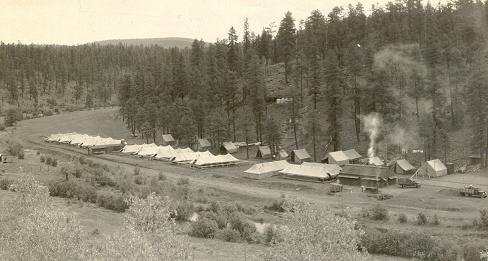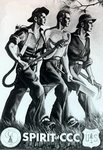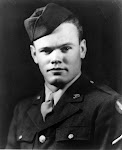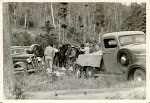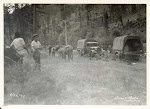The first rules of sturdy workmanship: work from a good set of plans and have knowledgeable, dependable foremen.
While every CCC enrollee’s story is unique, there is a commonality of experience that runs though the entire program and listening to the stories or reading the personal accounts of former enrollees, one is stuck by common themes that run through the narrative of the Civilian Conservation Corps.
Well, I’ve happened upon a set of photos that may help confirm the universality of the whole CCC experience, while at the same time perhaps speaking to the regimentation that was required to successfully shepherd hundreds of thousands of young men through a national work program, while producing construction improvements of lasting merit.
Flash forward a few years to a hike I took with a fellow CCC historian and advocate in the area around Prescott, Arizona. While walking the grounds of the former CCC camp at Walnut Creek, heads down, strolling through knee-and waist high vegetation, we studied the remains of what once was a shower and latrine building and assorted other structures. But one particular camp remnant spoke to me more strongly than the others that day and it only took a second or two for me to realize I’d seen this sort of construction before.
This pole configuration, evidently set for stringing telephone or electrical wire between buildings in the camp, was nearly an exact twin to the pole installation in the picture from Grand Canyon. I snapped a couple of shots of what otherwise would have been a meaningless, nondescript wooden pole, knowing that somehow there was probably a lesson there somewhere.
Wednesday, September 15, 2010
Regimentation. Standardization. Professionalism.
Posted by
Michael
at
6:45 PM
2
comments
![]()
Labels: Arizona, Editorial, Grand Canyon, National Park Service, U.S. Forest Service
Subscribe to:
Posts (Atom)
Buffalo Crossing Camp, Eastern Arizona
